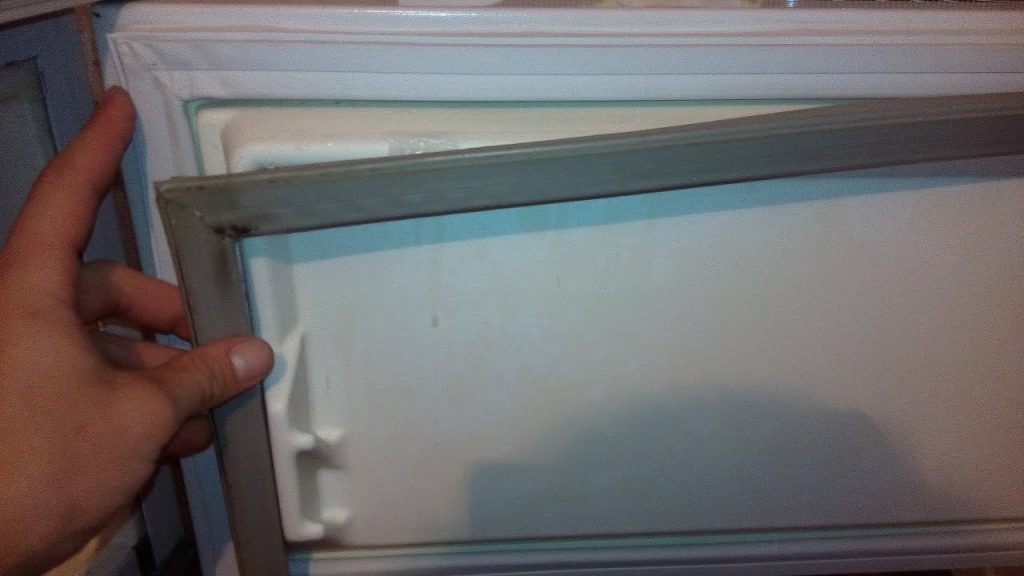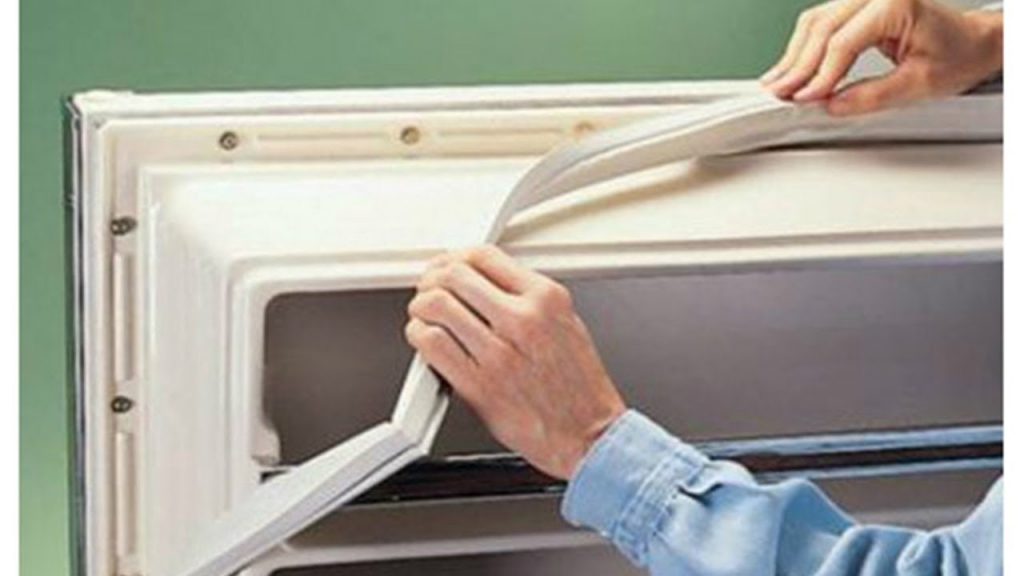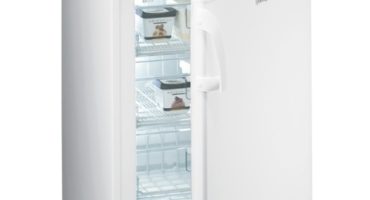Replacing household appliances with new ones is a problem even for the middle class. A refrigerator is a rather expensive and important element of any kitchen. Its breakdown can seriously affect both the budget and the moral condition of the family.
The most common damage is the skew of the door and the lag of the seal. How to solve these problems will be discussed in this article.
DIY seal repair and do-it-yourself fridge door adjustment

Refrigerator door seal
Why the door of the home refrigerator does not close
There are several explanations for this. A visual inspection of the door can determine the cause. Physical damage, deformation of the door (dents, distortions of metal, not fasteners), because of which the door does not close. This type of breakdown can only be fixed in the workshop or replaced with another. Deformed metal, which is used for external cladding of equipment, is very difficult to align at home. To do this, you must completely disassemble the door as a part and walk through it with a special power tool, and then assemble it back. Doing this “on the knee” at home is not recommended.
- Loosen or distorted fasteners. If the door curtains have traces of damage or bolts (sometimes rivets) do not hold tightly - this is a clear sign of a skewed door. Its elimination is possible at home by one person.
- A rotten, stuck or cracked seal is also the cause of this problem. After inspecting the rubber gasket around the perimeter, you can find the problem spot. If, after a little pressure or tugging of the rubber, the sealant crumbles or begins to sag, then it's time to start replacing it.

Replacing the seal in the refrigerator door
How to quickly adjust the skewed refrigerator door?
Refrigerator curtains are a very tricky part. They are attached to the plane of the door using pins. In order to remove the door and get to the mounting bots, you need to put the refrigerator on its side, with the curtains up. You can not put it on the back wall - there is a chance to damage the thin tubes that conduct the substance for cooling. This is fraught with serious consequences.
Having examined the bottom, it is easy to notice the small bolts that secure the lower door curtain. Having removed it, you can literally “pull” the door out of the upper groove. After that, the bolts (less often self-tapping screws or rivets) of the upper curtain will have free access. Sometimes they are closed with a plastic cover - it is easy to pry it with a knife, and after the repair is completed, put it in place.
The backlash of the curtains is determined quite simply - if, with a small load, the curtain “moves” from side to side, turns or makes a knock, it needs to be fixed more tightly or even replaced. Bent pins and cracks - a sign of wear on the part - should be purchased a new one.
- Bolts - it is necessary to set the curtains at a level (90 to the bottom level, in line with the lower curtain) and fasten with a key. Sometimes a thin counter washer is used to strengthen the structure, which does not allow the bolt to unwind.
- Self-tapping screws - a similar procedure, only here you will need a screwdriver with a straight or cross-shaped slot.
- Rivets are a bigger problem.It can be riveted using a special set of tools similar to a center punch for metal. If possible, replace the old rivets with screws or bolts. Thus, you will quickly repair the door and do not damage the box of the refrigerator.

Door curtain
If a crack was found in the area of the bracket attachment, it’s okay. Most refrigerators allow the installation of fasteners on the opposite side. To do this, it is necessary to remove the doors, release the socket for the pins from the plastic plugs on the other side and assemble the refrigerator, install the curtains on the other side. Cracks or holes in the old place for fastening must be closed with plastic covers (supplied with the refrigerator) or treated with epoxy resin (cold welding) in case of a serious crack.
Replacing the factory seal in the refrigerator?
To quickly install the sealing gum on the refrigerator door, you can not remove it from the hinges. However, you must work in a well-ventilated room - the smell of toxic glue can adversely affect your health.
So, if the problem is in the seal, then the first thing it needs to be removed. Factory gum is one part that adheres to metal using universal glue. It is easy to remove the gasket - it is worth prying it with a sharp knife and pulling it with your hand. In most cases, you can remove a large piece with one jerk.

Door seal
After that, it is worth removing the remnants of industrial glue. A rag with a soapy solution or a coarse sponge soaked in alcohol will do just fine. For particularly strong types of glue, chemical solvents will have to be used. The choice of solvent should be based on toxicity - it is worth choosing only species that are safe for the respiratory system.
After removing the old adhesive layer, you must order or make a new seal yourself. Finding the right one for popular refrigerator models is easy. The rubber part is worth looking for by the exact model name of your device. For older models, rubber tape pads are suitable. They are sold in building stores a meter or in special rolls of fixed length.

Rubber strip gasket
How to gum on the door in the refrigerator?
The best option is Moment glue for rubber, metal, and ceramics with an average strength. Too strong glue will be more difficult to remove from the door leaf after unsuccessful pasting or during the next repair.

New gasket on an old refrigerator
Some types of gum have a groove connection or are screwed with screws. In this case, glue is not needed. Pokleyka occurs in two stages:
- Drawing a thin layer of glue on the corners of the rubber square, leveling with a water level, stretch.
- Sizing the entire perimeter in small portions of glue.
It should be borne in mind that glue for rubber sets in 15-20 minutes. This is sufficient time to align and stretch the seal. When gluing the perimeter, firmly press the rubber to the metal - the strength of gluing depends on this. If possible, use clamps. After complete drying, remove the bubbles and wipe everything around with a detergent. The refrigerator is ready for further use.
After work
Replacing the old seal in the refrigerator is a simple task for an experienced craftsman. However, it is important to know how to care for your household appliance in order to avoid repeated breakage.
- Compliance with the defrost schedule (for obsolete models);
- Periodic inspection of components and parts for rotting, bad smell, crumbling;
- Prevention of overheating or hypothermia (especially relevant for equipment that is not currently in use, but stored in a warehouse or garage.
By following these simple rules, you can avoid the need for repairs and extend the life of the equipment.It is important to note that a huge amount of cold goes through the slots in the sealant, which adversely affects the quality of the products and makes the refrigerator work in an enhanced mode. This adversely affects its resource. Even a small gap in which the corner of A4 sheet will pass freely is a potential problem and adversely affects work.



